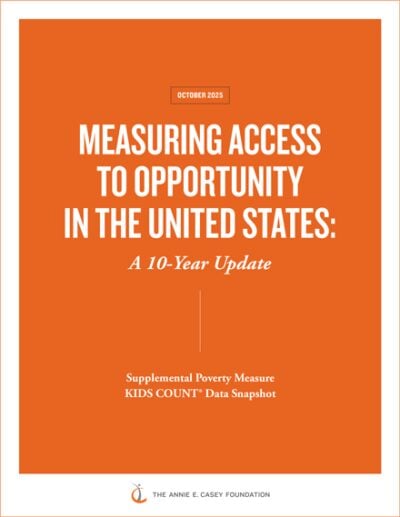Child poverty swung from 5% to 13% in three years
SPM child poverty hit 5% in 2021 during expanded supports, then rose to 13% by 2024 as relief ended.

Child poverty fell to a record low, then rebounded, according to a new KIDS COUNT® Data Snapshot from the Casey Foundation.
In 2021, with federal pandemic relief and an expanded child tax credit, the Supplemental Poverty Measure (SPM) showed child poverty at 5%, the lowest on record. By 2024, as temporary supports expired, the SPM rate rose to 13%. Without public support, it would have reached 25%.
In 2024, 61% of children in poverty lived in families with at least one working parent, underscoring that wages and supports are not keeping pace with costs. 
The SPM isolates the effect of policy by counting noncash benefits and tax credits. In 2024, programs such as the earned income tax credit, child tax credit, SNAP, Social Security, SSI and housing subsidies kept 8.5 million children out of poverty.
Between 2021 and 2024, child poverty increased for every racial and ethnic group, with steepest rises for Black and Latino children. State SPM rates for 2022–2024 ranged from 5% in Maine to 19% in Louisiana and the District of Columbia; most Mountain West states had the lowest rates. Regional patterns show the South with both the highest average rates and the steepest increases.
The SPM helps leaders understand how choices affect children’s daily lives and long-term outcomes. Continued federal data collection is vital for tracking progress and targeting solutions.
The SPM shows that public investments cut child poverty dramatically. In 2024 alone, tax credits and basic needs programs kept 8.5 million children above the poverty threshold, preventing the SPM rate from nearly doubling. Maintaining and strengthening these policies — and the data systems that track them — is essential to ensure children, youth and families have what they need to thrive.
We hope you'll find value in this report. We’d love to get a little information from you, which we'll use to notify you about relevant new resources.